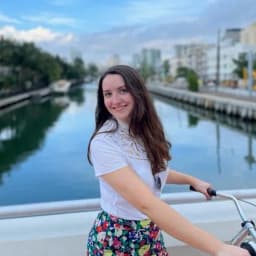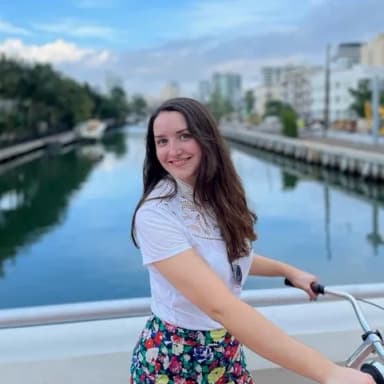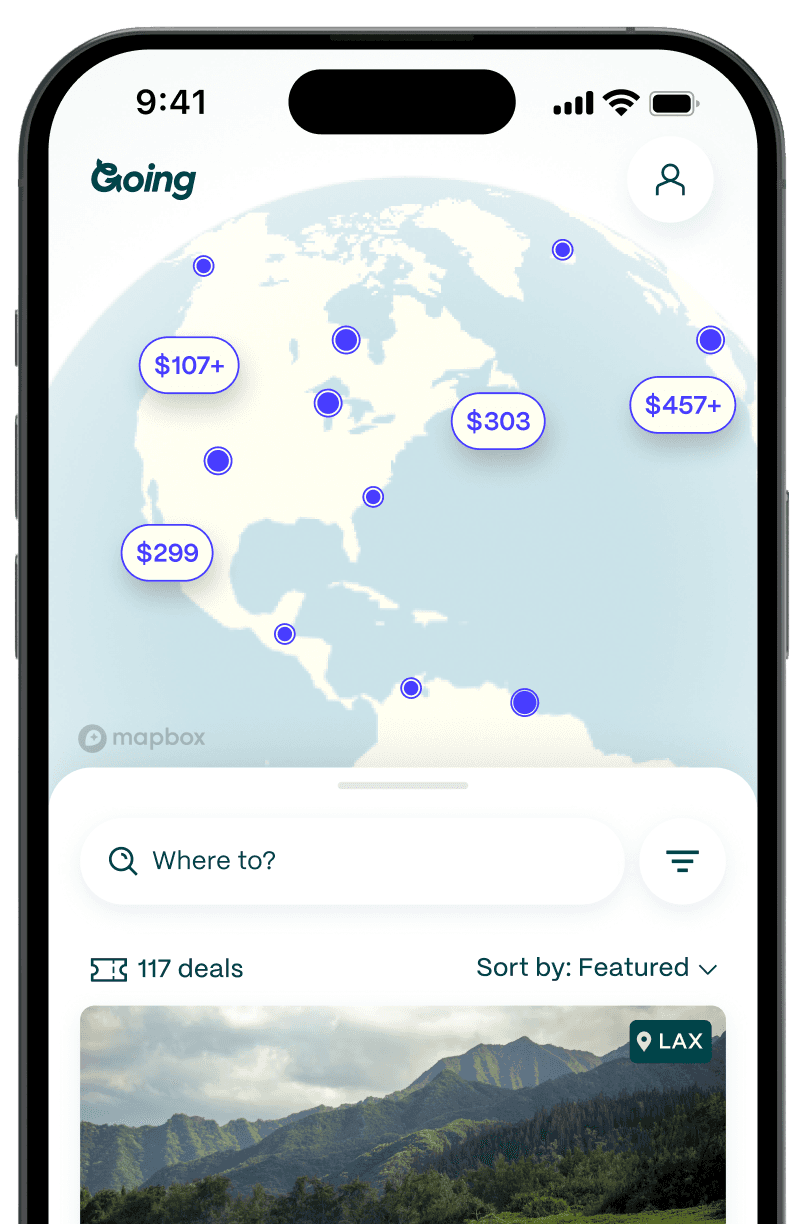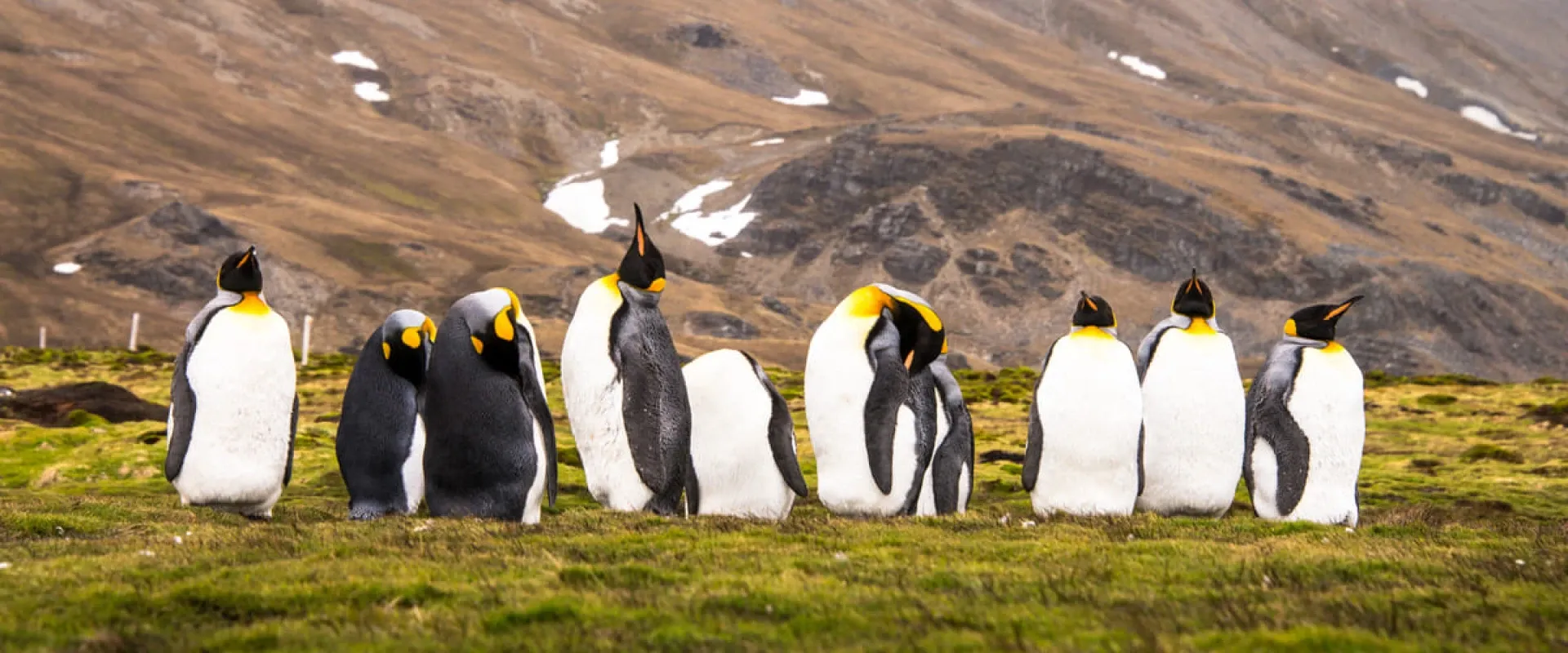
Seeing King Penguins in a Patagonian Nature Reserve
Tierra del Fuego—or “the land of fire” in English—sounds like the last place you’d find a thriving penguin colony. The name is deceiving, though, as Tierra del Fuego, an archipelago at the southernmost tip of South America, is not named after its climate or physical landscape; it was named by Portuguese explorer Ferdinand Magellan, who spotted massive bonfires, made by the native Yaghan people, on the shores of the islands in 1520.
Part of the wider Patagonian region shared by Chile and Argentina, Tierra del Fuego is 620 miles from the Antarctic Peninsula and has a subpolar climate, with long winters and winds so ferocious they could probably leave your car without a door.
On a Patagonian road trip with my partner, that was the first sign this journey was not for the faint of heart. The second sign was an actual sign on the side of the road, which I translated from Spanish for my partner: “The route of the end of the world.” Brave the elements, and you’ll be rewarded: This is where you’ll find the only king penguin colony in South America.

To get to Tierra del Fuego you have to cross the Strait of Magellan. We hired a car in Punta Arenas and drove to the tiny car ferry port at Punta Delgada, passing the wreckage of two ships on our way. The likelihood of spotting a penguin—or any life form for that matter—seemed close to zero. It wasn’t long after we’d arrived on the archipelago’s main island that we spotted our first guanaco (a native llama-like animal, which became a familiar sighting over the course of our trip). Then, an eagle, a fox, a hare. What was once a vast expanse of emptiness suddenly teemed with life.
A similar surprise happened to Cecilia Durán in 2010, when a colony of around 90 king penguins, the second largest of the 18 species of penguins, turned up on her sheep farm in Bahia Inútil (or “Useless Bay” in English). Although king penguins were not new to the area—evidence suggests they inhabited the area alongside the native Selk'nam people some 150 years ago—they had not been seen for several years and had never stayed for very long. Durán previously recalled a colony in the 1960s–70s, which eventually disappeared, in no small part due to penguins being captured and sold to zoos.
News spread of the penguins’ return, and soon people began encroaching on their habitat, attempting to see their striking orange-gold markings up close and capture a rare penguin selfie. By 2011, only eight penguins remained. Durán, along with her husband and a small group of locals, in turn founded the Parque Pingüino Rey. With the help of biologists, archaeologists, and local experts, the colony today is once again thriving.

Durán’s passion project has grown into Reserva Natural Pingüino Rey, an important conservation area dedicated to protecting the flora, fauna, and archaeological sites around Bahia Inútil, including its namesake penguins. It was also the sole reason we extended our Patagonian road trip south of Punta Arenas.
The reserve is only open to visitors who have pre-booked a guided tour, as part of the reserve’s efforts to protect the ecosystem. The guides split us into two group—one Spanish-speaking, one English-speaking—and explained that once we were out on the paths, we’d need to keep our voices down so as not to disturb the penguins. They were also insistent that we stick to the path, keeping a good distance between us and the colony. The observation code, while strict, is essential to the continued survival of the penguins and serves as a reminder that it is our privilege—not our right—to witness the animals in their natural habitat.
Our guide led us on the short walk to the first of two hideaways, or wooden viewing platforms that are elevated to protect the flora underfoot and provide an unobscured view of the penguins. There, just beyond an inlet of water, was a huddle of about 60 king penguins. Their bellies were a bright, dazzling white against the surrounding shrubland. Some on the periphery of the group lay on their fronts while most stood stoically, their sturdy bodies unaffected by the violent gusts of wind. Each movement caught my eye: an occasional stretch of a wing, a smooth twist of the neck, a quick ruffle of feathers. Occasionally, one would shuffle farther into the group, seemingly to keep warm. I was struck by the individuality of each penguin, their unique shapes and poses, as well as how closely they stood together, yet how little they seemed to interact.

Our guide was present and happy to answer questions, but he stepped back to let us take in the experience for ourselves. For the better part of an hour, we watched from the first hideaway (the best vantage point of the day) as the penguins preened and posed, seemingly oblivious to our presence. When the cold had finally gotten the better of us and we made our way to leave, we found ourselves walking in step with a lone penguin, who was headed toward the ocean. A swift dive into the crashing waves and it was gone.
“How on earth do they survive here?” I asked. “They got lucky with this place,” our guide told us. He explained that the bay is almost 200 miles from the open ocean, so the penguins are relatively protected from natural predators.
There is also a coordinated effort to protect the penguins. Since 2011, the team has monitored them, witnessing two important milestones: the birth of the first chicks in 2013 and the independence of the first chick in 2015. The reserve collaborates with international researchers and organizations to understand more about the colony’s behaviors and challenges, and since 2014, it has run an eco-classroom to educate young people in the local area and beyond. Luck may have something to do with it, but it seems to me that the success of the colony is largely due to the dedicated work of the reserve.
After our tour, we drove to the coastal town of Porvenir, knowing we had witnessed something special. Reserva Natural Pingüino Rey was now a tiny dot in our rearview mirror—a small beacon of hope at the end of the world and a heartening example of ecotourism done right.
Getting there
- Getting there: Most international flights arrive in Chile at Santiago's Comodoro Arturo Merino Benítez International Airport (SCL), where it's pretty easy to get a regional flight to Punta Arenas (PUQ). From there, there are two ways to get to Tierra del Fuego. You can rent a car and drive Ruta 255, then take the car ferry from Punta Delgada to Bahia Azul (this is what we did). You can also take a car ferry from Punta Arenas to Porvenir. Find timetables for both of these routes here. While improvements are underway, many roads on Tierra del Fuego are made of loose gravel, so the risk of a cracked windshield is relatively high; keep this in mind when choosing your rental. If you’re short on time or don’t want to rent a car, there are tour group options.
- Average price of cheap flights to Santiago: $541 RT
How to do it
- Best time to go: The best time to visit Patagonia is in the Austral summer (December–March), when the roads are not snowed in. Reserva Natural Pingüino Rey is open October–May (closed for public holidays). Check online for details and availability.
- Cost: About $17 USD (15,000 CLP) for adults; $11 USD (10,000 CLP) for children ages 11–17 or people over 60; free for children under 11 and people with disabilities.
- Tips & considerations: The reserve limits visits to six per day; each one lasts one hour and has a capacity of up to 15 people, so book early, either through the website or as part of a tour group. We brought our own binoculars, but the reserve provides several in the hideaways for visitors to use for free. Dress for cold, windy weather, even in the summer months. The reserve has shelters but is mostly open to the elements.
Other animal encounters around the world
Last updated January 17, 2024
Articles you might like
View All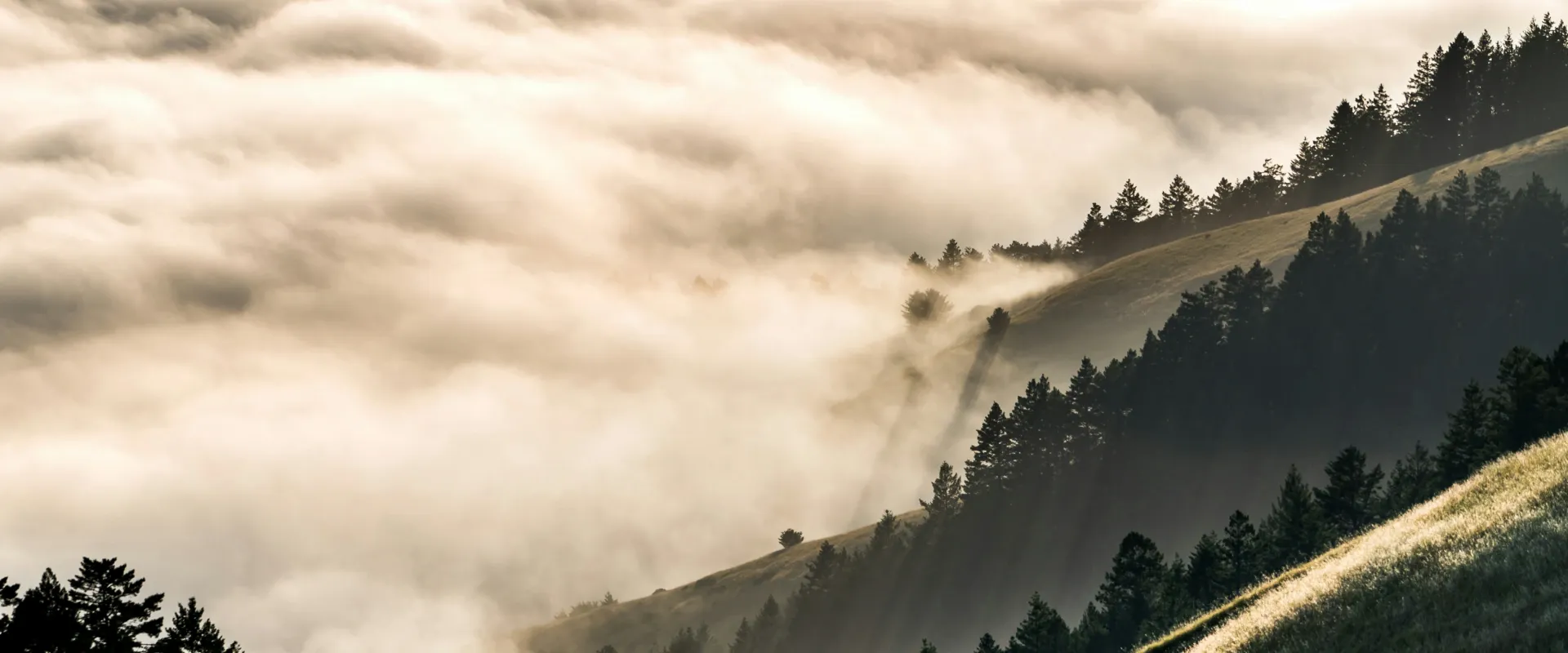
Best Day Trips from San Francisco: 25 Trips You’ll Actually Want to Take (2026)
Jan 6, 2026
12 min read
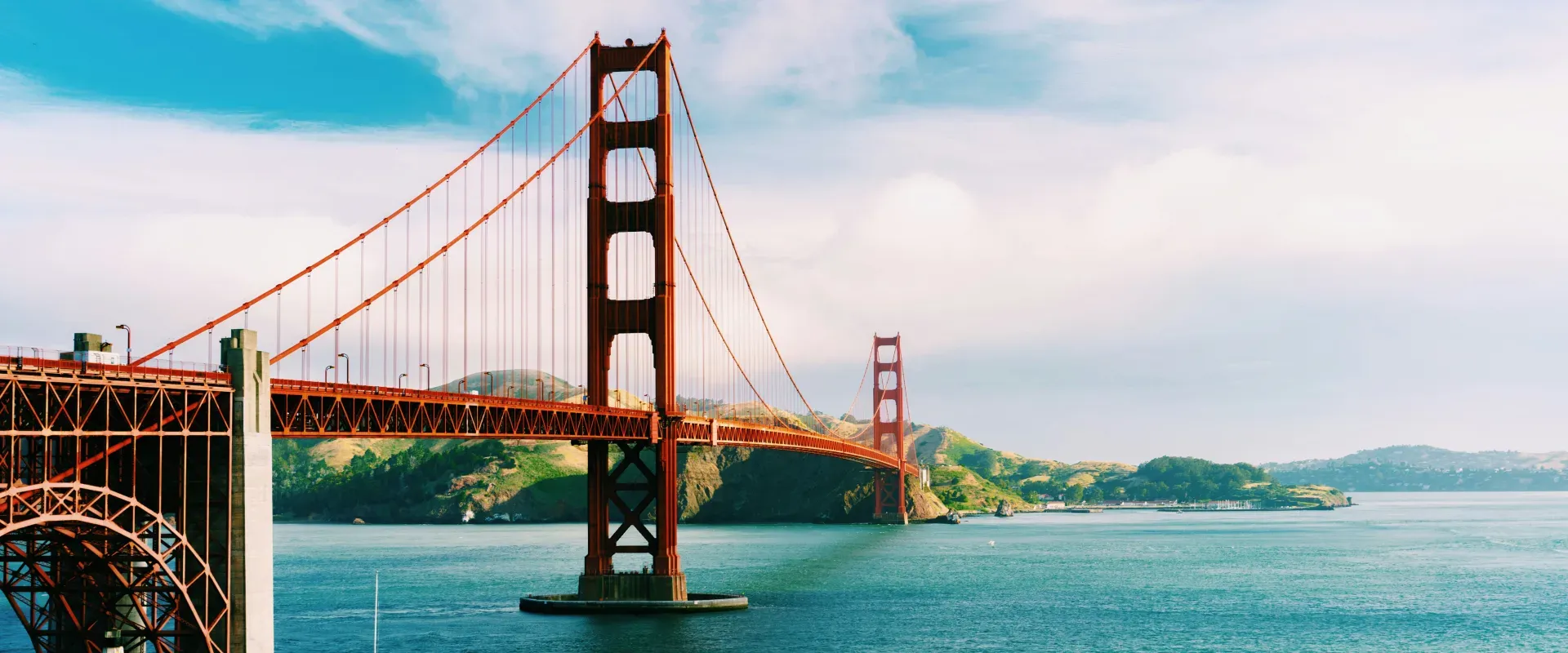
30 Free Things To Do In San Francisco That People Keep Recommending
Jan 6, 2026
10 min read

Marrakesh: The North African City Where Storytelling Is an Art
Jan 5, 2026
5 min read
